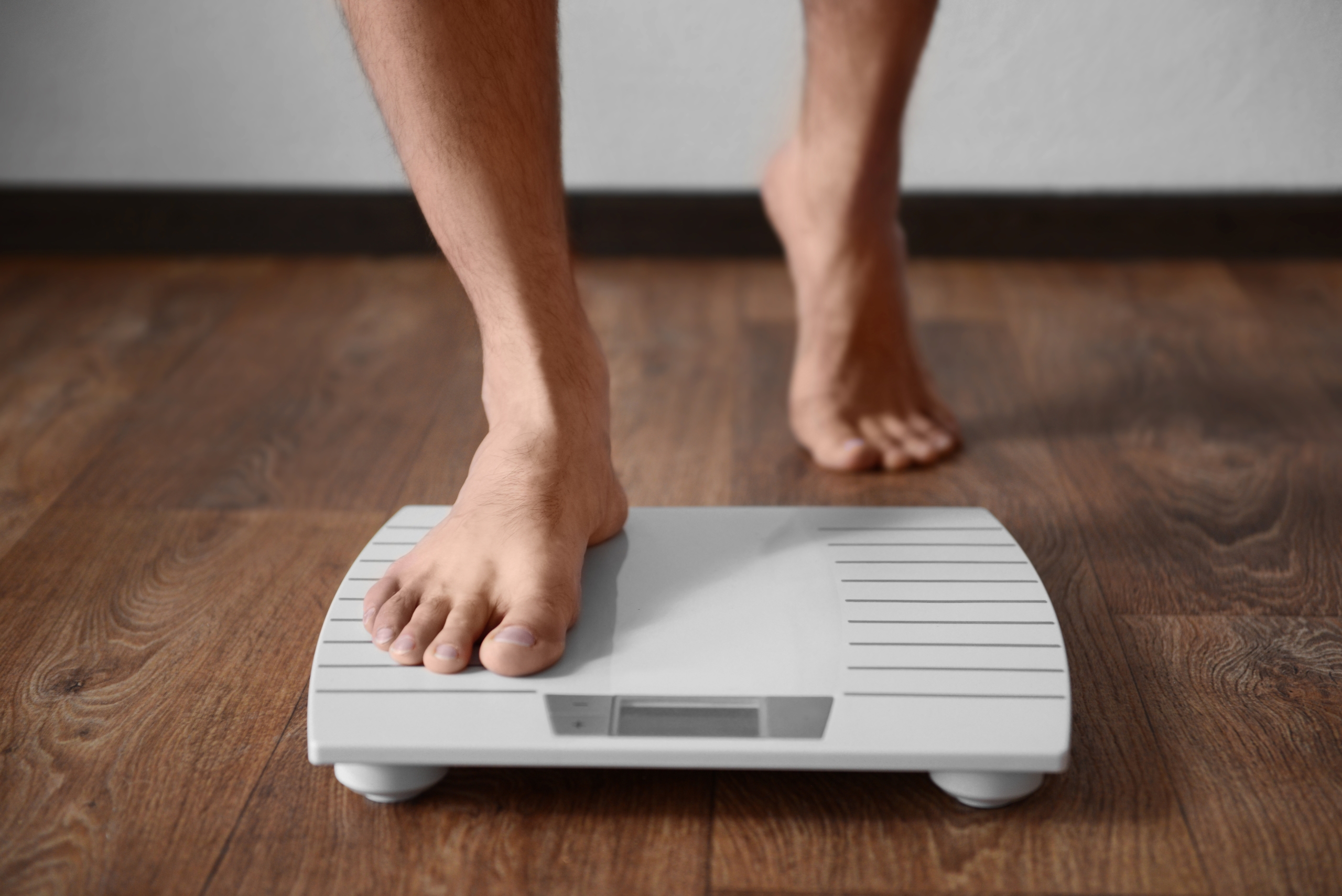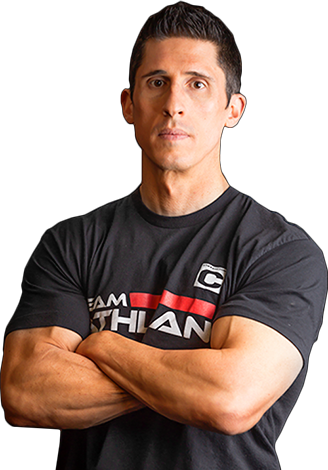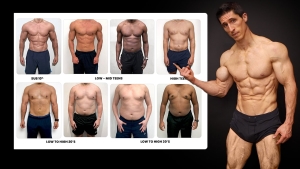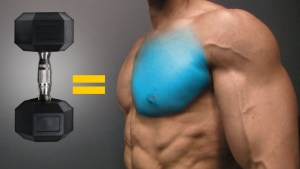The TDEE calculator below will give you a good baseline of calories burned per day (total daily energy expenditure) by a typical person of your height, weight and activity level. You can then use this data to increase or decrease the calories you consume based on your goal of gaining or losing weight.
Fill out the details in the TDEE calculator below based on your current stats and activity level. Be as honest as possible about your actual activity level so that you get the most accurate results.
Based on your stats
--
Total Daily Energy Expenditure (TDEE)
--
Basal Metabolic Rate (BMR)
By activity level
WHY IS TDEE IMPORTANT?
Most people approach weight loss, muscle gain, or even maintaining their current weight with the wrong plan and the wrong tools.
And with thousands of calorie counting apps, websites, and software to choose from, it can feel overwhelming to pick the one that’ll work for you.
In times like this, it’s best to go back to basics. Stick with something that’s been around for a long time and used by almost every industry expert.
Enter the TDEE calculator.
Sure, you’ve probably heard of TDEE calculator, but have you ever used one that gives you the accurate calorie goal you need for optimal health and real progress in your fitness journey?
You might be surprised.
Calculating your Total Daily Energy Expenditure (TDEE) is not just about plugging numbers into a basic calorie calculator.
Your energy intake, activity levels, and even your lean body mass must be accounted for in ways that match your unique body composition and lifestyle.
This post will break down how TDEE works, why it’s more than just a simple caloric intake equation, and how understanding the right predictive equations (like the Mifflin-St Jeor Equation or the Harris-Benedict Equation) can dramatically improve your nutrition and training.
By the end, you’ll not only know your actual energy requirements but also how to tailor them to your fitness goals.
Forget cookie-cutter advice. This is about finding YOUR perfect daily energy budget.
WHAT IS TDEE (TOTAL DAILY ENERGY EXPENDITURE)?
You’ve heard it so many times that you’re probably sick of it: it’s all about calories in vs. calories out.
If you want to lose weight, burn more calories than you consume. For weight gain, it’s just the opposite.
But do you really know what your daily caloric intake should be?
Understanding your personal Total Daily Energy Expenditure (TDEE) is how you can achieve your weight loss, weight maintenance, or muscle gain goals.
Forget about trying to use a rough guess for how many calories per day you should eat.
TDEE is the ultimate metric for understanding how much energy your body burns every day from bodily functions like breathing to physical activity levels like crushing your next workout.
And TDEE calculators are tools that help you calculate an accurate estimate of how many calories per day your body requires based on factors like lean body muscle mass, fat percentage, and current weight.
It’s not just about what happens in the gym. It’s a combination of four primary factors:
BASAL METABOLIC RATE (BMR)
Your Basal Metabolic Rate (BMR) is the foundation of your TDEE, accounting for the basic energy requirements your body needs to function at rest.
We’re talking about basic body functions like maintaining your body temperature, pumping blood, and other physiological functions.
BMR does not include physical activity like hitting the weights.
The more muscle you have, the higher your BMR, and the more calories per gram your body burns at rest.
NON-EXERCISE ACTIVITY THERMOGENESIS (NEAT)
Did you know you’re burning calories even when you’re not in the gym? That’s thanks to Non-Exercise Activity Thermogenesis (NEAT).
These are the calories burned from non-structured daily activities like walking, typing, or even fidgeting.
If you’re living a sedentary lifestyle, boosting NEAT can be really helpful for improving your daily calorie burn.
Simple tweaks to your daily activities, like taking the stairs, pacing while on the phone, or adding extra steps throughout your day, can increase your calorie expenditure without requiring more structured exercise.
THERMAL EFFECT OF FOOD (TEF)
The Thermic Effect of Food (TEF) refers to the energy your body uses to digest, absorb, and process the calories from food.
Not all foods are created equal.
High-protein diets require more energy to break down than carbs or fats, making them an excellent choice for those aiming to maximize their caloric deficit or maintain weight loss goals.
This is why understanding your diet composition and adjusting your macros is crucial when calculating your TDEE.
A diet rich in foods high in protein not only supports muscle gain but also increases your energy requirements, adding another layer to your daily calorie intake.
EXERCISE ACTIVITY
Finally, we come to the Exercise Activity factor, the calories burned during your exercise routine, sports, or even an intense training day.
This is the most variable component of TDEE and depends heavily on your activity patterns and exercise plan.
The more you move, whether it’s structured days per week of weightlifting, cardio, or strength sports, the higher your calorie burn.
For individuals with consistent activity levels or a balanced exercise routine, this can significantly increase your TDEE, allowing for more calories per day without compromising weight maintenance.
DIFFERENCE BETWEEN FORMULAS
When it comes to calculating your TDEE, the formula you use matters.
Each approach has its strengths and understanding the difference between the Harris-Benedict equation, Mifflin-St Jeor Formula, and Katch-McArdle equation will help you choose the best method for your caloric requirements and health journey.
HARRIS-BENEDICT EQUATION
The Harris-Benedict equation is one of the oldest and most widely used formulas.
It calculates your baseline energy expenditure based on age, weight, height, and gender.
While it’s still considered a reliable common formula, it doesn’t account for body fat percentage or body cell mass, which makes it less precise for those with atypical body measurements or extreme fitness goals.
It may overestimate or underestimate calorie counts for individuals with high lean body mass or significant fat gain.
MIFFLIN-ST JEOR EQUATION
The Mifflin-St Jeor Formula improves upon the Harris-Benedict equation by providing more accurate tools for calculating caloric requirements.
It’s considered the most reliable method for the general population and is often used in weight loss calculators or calorie burn calculators.
It strikes a balance between simplicity and accuracy, making it ideal for calorie counter apps, macro calculators, and calorie deficit calculator tools.
Whether you’re planning a calorie per day deficit for a weight loss journey or adding extra calories for muscle growth, this formula is versatile.
KATCH-MCARDLE EQUATION
The Katch-McArdle equation takes things to the next level by incorporating body fat percentage into the calculation.
This formula is particularly valuable for athletes, bodybuilders, or anyone with higher lean body mass.
It’s the most precise formula for those with significant muscle mass because it adjusts for fat for energy versus additional energy expenditure from muscle tissue.
This ensures your calorie intake level matches your actual energy source needs. But the catch is that you need to know your bodyfat percentage.
This is why the Mifflin-St Jeor is the most convenient option.
HOW DO YOU CALCULATE TDEE?
Let’s talk numbers, but don’t sweat it. This doesn’t have to feel like math class.
The fastest way to nail your calorie goals is with a daily calorie intake calculator or a weight loss calorie calculator.
These calculators are based on mathematical formulas, and examples include the Harris-Benedict equation, Mifflin-St Jeor Equation, and Katch-McArdle equation.
You don’t have to memorize these equations (although I’d be impressed if you did!), but if you’re the type who likes to get hands-on, here’s how to crunch the numbers yourself and calculate your TDEE like a pro.
START WITH YOUR BASAL METABOLIC RATE (BMR)
Your BMR is the foundation. It’s the base energy requirement your body needs to handle the essentials, like keeping your heart beating and your body cell mass functioning.
To calculate it, I’d recommend you use the Mifflin-St Jeor formula because it’s both effective and straightforward.
And unlike the Harris-Benedict equation or Katch-McArdle equation, it doesn’t require your body fat percentage yet still provides accurate tools to estimate your calorie requirements.
FOR MEN:
- BMR = 10 x weight (kg) + 6.25 x height (cm) – 5 x age (years) + 5
FOR WOMEN:
- BMR = 10 x weight (kg) + 6.25 x height (cm) – 5 x age (years) – 161
Think of this formula as the gold standard for getting a reliable estimate of your baseline energy expenditure.
MULTIPLY BY YOUR ACTIVITY LEVELS
Now, it’s time to factor in how much you move. Multiply your BMR by an activity factor multiplier that best matches your activity level factor.
These activity multipliers are a key component of energy expenditure and account for additional energy expenditure based on your activity patterns.
But here’s where you might run into an issue. Most people overestimate their activity levels consistent with their lifestyle.
They use an activity level factor that aligns with what they ideally want to do, not what they are actually doing.
This can lead to inaccurate calorie intake levels and mess up your calorie deficit mode or bulking plan.
So, think hard, be honest, and use this quick cheat sheet:
- Sedentary (little to no daily exercise): BMR x 1.2
- Lightly Active (light movement or 1-2 days per week of training): BMR x 1.375
- Moderately Active (3-5 days per week of daily exercise): BMR x 1.55
- Very Active (intense short-term and chronic interval training or active sports): BMR x 1.725
- Extra Active (physically demanding jobs or elite-level athletes): BMR x 1.9
Once you have your BMR and activity factors, you can adjust based on your body composition goals of weight loss and weight gain.
HOW DO YOU USE TDEE TO LOSE WEIGHT?
To lose weight effectively and maintain it long-term, you need a calculated calorie per day deficit based on your TDEE.
Creating a calorie deficit of 250-330 calories per day is usually considered the sweet spot, helping you shed about one pound per week.
Naturally, results may vary, but this pace ensures sustainable weight loss, preventing the burnout and frustration that often come with overly restrictive diets.
HOW DO YOU USE TDEE TO GAIN WEIGHT?
If your goal is to build muscle and gain size, simply adding extra calories to your TDEE can make all the difference.
Aiming for an increase of 10-to-12 calories per pound of body weight is a strategy to support muscle growth without accumulating unnecessary fat gain.
This is assuming that you’re actively involved with a structured and consistent resistance training program.
By creating a controlled calorie surplus, you’re giving your body the energy source it needs to fuel intense training days and optimize recovery.
Just make sure you’re keeping your extra calories in check!
Adding too many additional calories might seem like a fast track to muscle mass weight gain, but it often leads to more fat gain than muscle.
Instead, sticking to a moderate surplus ensures that your body uses the extra energy to build lean body cell mass rather than storing it.
Muscle growth depends on having the right balance of caloric intake and caloric requirements. This surplus provides that balance without overloading your system.
HOW TO ADJUST YOUR TDEE AS YOUR BODY CHANGES
Your TDEE isn’t a fixed number. It shifts as your body changes, your activity levels adjust, and your goals evolve.
Ignoring these changes? That’s how progress stalls.
Whether you’re aiming to lose fat, gain muscle, or hit your maintenance calories, updating your TDEE ensures you’re working with reliable estimates and not flying blind.
TDEE isn’t just about crunching numbers. It’s about building a personalized plan that matches your body’s components of energy expenditure.
Keeping your TDEE updated ensures you’re in control of your goals and sets you up for a sustainable, active lifestyle.
REASSESS YOUR BASELINE ACTIVITY LEVEL
Your baseline activity level is the foundation of your TDEE, but it doesn’t stay static.
Starting to lose weight? Your calorie intake will need to drop slightly as your calories out forces decrease.
Beginning to gain muscle? You’ll need to account for the extra amounts of energy lean muscle demands.
Use tools like a body fat calculator to measure changes in body composition.
This ensures that your baseline estimate reflects where you are now—not where you started.
ADJUST FOR ACTIVITY LEVELS
Your broad activity levels such as training intensity, frequency, and lifestyle habits impact your calorie needs.
Moving from a desk job to a more active lifestyle? Your calorie expenditure will rise, requiring a boost to your calorie target.
On the flip side, if your training volume dips, it’s time to scale back on calorie intake.
Here’s where a calorie expenditure calculator becomes an invaluable tool.
Combine it with assessments of activity level to keep your personalized plan on track.
FOCUS ON NUTRITION FOR MAXIMUM EFFECTS
What you eat matters just as much as how much.
Prioritize foods rich in protein and healthy fats to support muscle recovery and metabolic efficiency.
If you’re following a Keto Diet or dialing in your keto macros, don’t overlook the importance of balancing day macros for optimal energy and performance.
For weight loss, aim for a 15-25% calories reduction. This supports calorie deficit goals without compromising muscle retention.
Tools like a calculator for maintenance calories and calorie deficit calculators are great for fine-tuning your numbers.
TRACK PROGRESS WITH RELIABLE TOOLS
Tracking your intake and progress isn’t optional.
A calorie calculator with user-friendly tools is essential for monitoring calorie content and adjusting as needed.
Whether you’re targeting 1-2 pounds per week of fat loss or adding calories per week for muscle gain, these tools provide reliable estimates to keep you on track.
CONSULT A HEALTHCARE PROFESSIONAL
If you’re unsure about your calorie deficit goals, nutrition tips, or ideal weight estimate, a healthcare professional can provide guidance to help you stay aligned with a well-balanced lifestyle.
Here’s the bottom line: mastering your TDEE is the ultimate unit of measurement for hitting your fitness goals.
By understanding the calorie calculator steps and pairing them with proper nutrition and accurate macros, you create a strategy that supports sustainable results and an active lifestyle.
Forget relying on a bunch of formulas you don’t understand. This is about tailoring a plan that works for YOU and drives real progress.
Don’t have a fully fleshed out nutrition and fitness program that can help you achieve the weight loss or weight gain you’re after? We can help! Check out our ATHLEAN-X programs to see which is the best fit for your goals and fitness level.

- Here’s how to calculate your TDEE:
- Start with your BMR (Basal Metabolic Rate). Your BMR is the base energy requirement your body needs to maintain essential functions like breathing and heart rate.
- Use the Mifflin-St Jeor formula for a reliable estimate:
- Men: BMR = 10 x weight (kg) + 6.25 x height (cm) – 5 x age (years) + 5
- Women: BMR = 10 x weight (kg) + 6.25 x height (cm) – 5 x age (years) – 161
- Next, adjust for activity levels. Multiply your BMR by an activity factor multiplier based on your lifestyle:
- Sedentary (little or no exercise): BMR x 1.2
- Lightly Active (1-2 days per week): BMR x 1.375
- Moderately Active (3-5 days per week): BMR x 1.55
- Very Active (intense training or active sports): BMR x 1.725
- Extra Active (physically demanding jobs): BMR x 1.9
- To lose weight, create a calorie deficit of 250-330 calories per day to lose about 1 pound per week.
- To gain weight, add 10-to-12 calories per pound of body weight to your TDEE for a controlled surplus.
- Regularly reassess your calorie target and activity levels to ensure progress.
REFERENCES



































